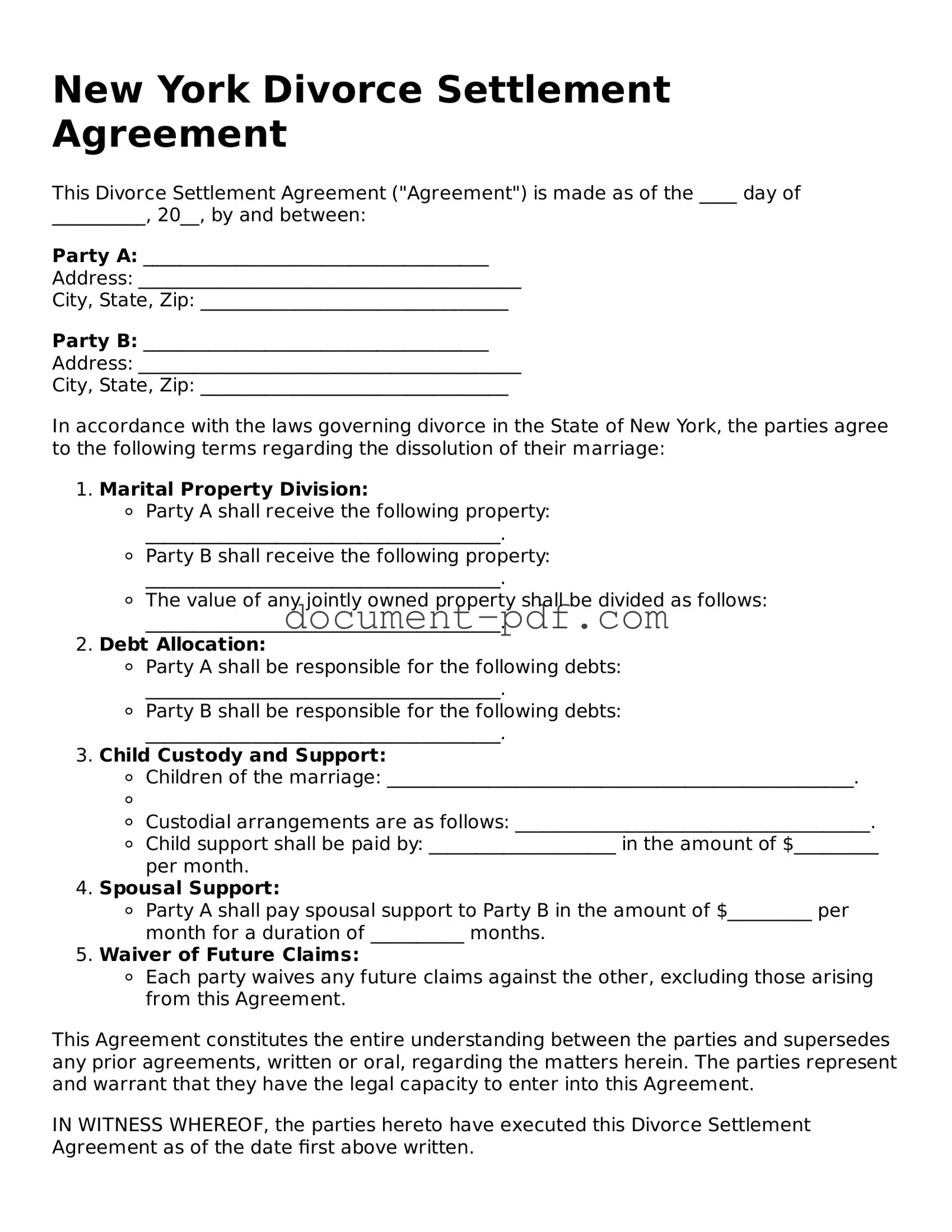New York Divorce Settlement Agreement
This Divorce Settlement Agreement ("Agreement") is made as of the ____ day of __________, 20__, by and between:
Party A: _____________________________________
Address: _________________________________________
City, State, Zip: _________________________________
Party B: _____________________________________
Address: _________________________________________
City, State, Zip: _________________________________
In accordance with the laws governing divorce in the State of New York, the parties agree to the following terms regarding the dissolution of their marriage:
- Marital Property Division:
- Party A shall receive the following property: ______________________________________.
- Party B shall receive the following property: ______________________________________.
- The value of any jointly owned property shall be divided as follows: ______________________________________.
- Debt Allocation:
- Party A shall be responsible for the following debts: ______________________________________.
- Party B shall be responsible for the following debts: ______________________________________.
- Child Custody and Support:
- Children of the marriage: __________________________________________________.
-
- Custodial arrangements are as follows: ______________________________________.
- Child support shall be paid by: ____________________ in the amount of $_________ per month.
- Spousal Support:
- Party A shall pay spousal support to Party B in the amount of $_________ per month for a duration of __________ months.
- Waiver of Future Claims:
- Each party waives any future claims against the other, excluding those arising from this Agreement.
This Agreement constitutes the entire understanding between the parties and supersedes any prior agreements, written or oral, regarding the matters herein. The parties represent and warrant that they have the legal capacity to enter into this Agreement.
IN WITNESS WHEREOF, the parties hereto have executed this Divorce Settlement Agreement as of the date first above written.
_________________________
Party A Signature
Date: ________________
_________________________
Party B Signature
Date: ________________
